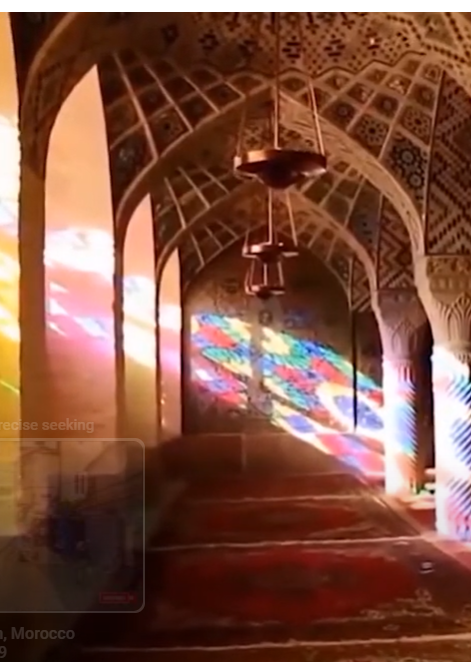
Venetian period
When the Venetians built their walls of Nicosia, St. Sophia’s Cathedral became the center of the city.
This reflected the position of medieval European cathedrals, around which the city was shaped.
In 1491, the cathedral was severely damaged by an earthquake. A visiting pilgrim described that a large part of the choir fell, the chapel of sacraments behind the choir was destroyed and a tomb that purportedly belonged to Hugh III of Cyprus was damaged, revealing his intact body in royal clothing and golden relics.
The golden treasure was taken by the Venetians.
The Venetian Senate ordered the repair of the damage and set up a special commission, which taxed an annual contribution of 250 ducats from the archbishop. The repair was very extensive and thorough; in 1507, Pierre Mésenge wrote that despite the fact that the building was “totally demolished” 20 or 22 years ago, it then looked very beautiful.
Ottoman period
The first imam of the mosque was Moravizade Ahmet Efendi, who hailed from the Morea province of the Ottoman Empire. All imams maintained the tradition of climbing the stairs to the minbar before Friday sermons while leaning on a sword used during the conquest of Nicosia to signify that Nicosia was captured by conquest. During the 50 day Ottoman siege of the city in 1570, the cathedral provided refuge for a great number of people. When the city fell on 9 September, Francesco Contarini, the Bishop of Paphos, delivered the last Christian sermon in the building, in which he asked for divine help and exhorted the people. The cathedral was stormed by Ottoman soldiers, who broke the door and killed the bishop along with others.
They smashed or threw out Christian items, such as furniture and ornaments in the cathedral and destroyed the choir as well as the nave. Then, they washed the interior of the mosque to make it ready for the first Friday prayer that it would host on 15 September, which was attended by the commander Lala Mustafa Pasha and saw the official conversion of the cathedral into a mosque. During the same year, the two minarets were added, as well as Islamic features such as the mihrab and the minbar. Following its conversion, the mosque became the property of the Sultan Selim Foundation, which was responsible for maintaining it.
Other donors formed a number of foundations to help with the maintenance. Okçuzade Mehmed Paşa, a governor of Cyprus in the 16th century, donated a shop to provide income for the Sultan Selim Foundation; other donations include estates in the countryside and other shops. The foundation employed trustees (mütevelli) to look after the funds and transferred 40,000 akçe annually to Medina in late 16th century. During the Ottoman period, it was the largest mosque in the whole island, and was used weekly by the Ottoman governor, administrators and elite for the Friday prayers. In the late 18th century, a large procession that consisted of the leading officials in the front on horseback, followed by lower-ranking officials on foot, came to the mosque every Friday.
The Friday prayers also attracted a large number of Muslims from Nicosia and surrounding villages. Due to the crowds frequenting the mosque, a market developed next to it and the area became a trade center. The area around the mosque became a center of education as well, with madrasahs such as the Great Madrasah and Little Madrasah being built nearby.
In 1874, upon rumours that Sultan Abdülaziz would visit Nicosia, a new gate, called the “Aziziye Gate” after the sultan, was built at the east end of the building. The gate was an enlargement of a pre-existing Lusignan window on the site, and pieces of marble and other material from the surroundings were used in its construction. The decorations of the gate include an inscription by calligrapher Es-Seyyid Ahmet Şukri Efendi, the calligraphy teacher of the local high school. The inscription consists of a praise of the sultan and mentions that the gate was built on Abdülaziz’s orders by Nazif Pasha. It is surrounded by two ornate figures depicting cypress trees.
The gate was afterwards used as the women’s entrance, and later fell into disuse, remaining permanently locked.
British rule and 20th century
In 1949, the imams stopped climbing to the minaret to read the adhan and started using loudspeakers instead.
On 13 August 1954, the Mufti of Cyprus officially renamed the mosque “Selimiye Mosque”, in honor of the Ottoman sultan Selim II, who headed the empire during the conquest of Cyprus.
I agree to the terms outlined below:
You agree to upload and assign Mosqpedia Database the rights to use the content worldwide and in perpetuity across all current and future media platforms. Mosqpedia Database may edit, copy, adapt and translate your contribution.
The content will be distributed under the Creative Commons Attribution-Deed – Attribution-NonCommercial-NoDerivatives 4.0 International – Creative Commons
All data will be stored in line with data protection regulations.
I agree to the terms outlined below:
You agree to upload and assign Mosqpedia Database the rights to use the content worldwide and in perpetuity across all current and future media platforms. Mosqpedia Database may edit, copy, adapt and translate your contribution.
The content will be distributed under the Creative Commons Attribution-Deed – Attribution-NonCommercial-NoDerivatives 4.0 International – Creative Commons
All data will be stored in line with data protection regulations.